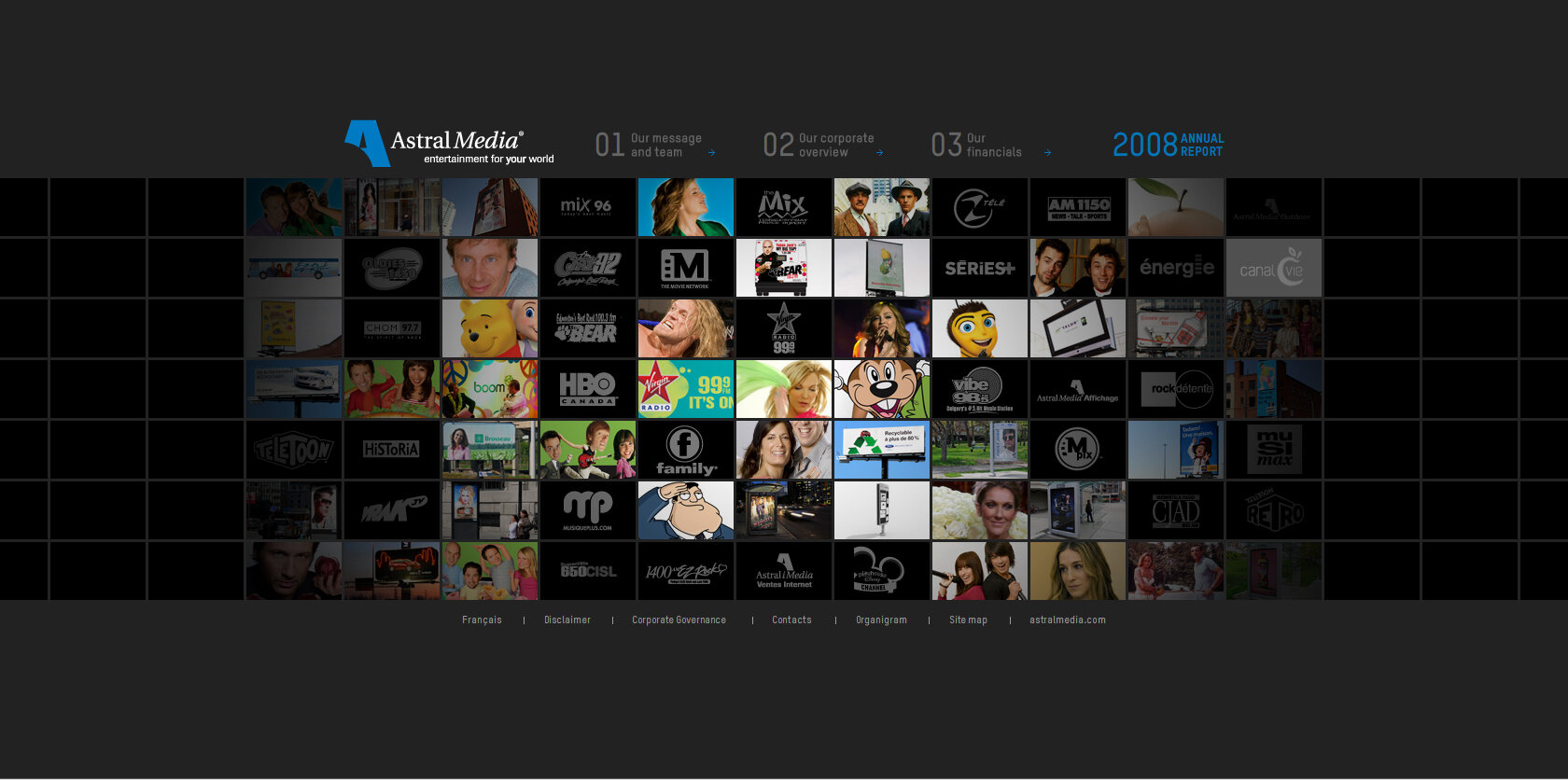
Astral Media Story
The Customer Need: To find a Digital Asset Management and Workflow solution that could adapt to their specific and changing workflows
The Customer Solution: An organized Asset Library that provides users the ability to collaborate and search on vast amounts of digital content, giving all departments greater visibility and increased speed of the iterative process across their organization.
Background
Based in Toronto, Canada, Astral Media (now known simply as Astral) is Canada’s largest radio broadcaster and is a major force in premium and specialty TV programming in Canada. Every day, hundreds of shows are promoted and “aired” by Astral and its vast network of affiliates to viewers across the Canadian market.
Sitting between the Programming Department (the department that locks in the show schedule for the month) and the Operations Department (the department that broadcasts the shows every day) is a small team of 12 talented motion and print designers collectively called the Graphics Department.
The responsibilities of the Graphics Department at Astral are vast. All production of On-Air, Off-Air and Multi-Platform graphics come through this department. That means, the team creates and ensures consistency and quality of all on-air branding, interstitials, and motion graphics for their own shows, all website graphics, print ads, and promotional material for their shows, and all graphics that go out to their affiliates. There is usually a ton of coordination that takes place, from sourcing media from studios, to obtaining approvals on graphics, to managing a number of sub-contractors when there is overflow.
To add to the complexity, Astral has been growing exponentially and transitioning from tape to digital content, both of which are forcing Astral to re-think how they approach the management of their digital assets.
Astral’s TACTIC for Asset Management
With their rapid growth and move to digital, Astral’s Creative Department was suddenly challenged to find a solution that was capable of organizing terabytes of digital content, and giving all departments greater visibility to that content in order to speed the iterative process across the organization.
After looking at multiple solutions, they decided to employ TACTIC for two reasons: flexibility and price. Other solutions were simply too geared to film or visual effects production, and not flexible enough to adapt to their specific workflow. Or, they were geared to handling on-air needs only and were simply too expensive. No other solution on the market was capable of integrating so easily into their processes for the price.
Astral’s first step with TACTIC will be the creation of a secure media library consisting of thousands of images and assets. As content is ingested, it will be tagged with an array of information, including legal descriptions, ratings, whether it’s linear or on-demand, date of first run, what channel it will be on, genre, series identifier, synopsis, country of origin, delivery size, and much more. That information will not only assist in the searching capabilities of the library; it will reside with the asset and be passed along to subcontractors and affiliates to inform them of the asset’s proper use.
Recognizing that new solutions often run into adoption issues because they present a new workflow, Astral is working closely with Southpaw to create a user interface on top of the TACTIC library that will make the experience of searching, finding, tagging and using assets far more comfortable for all users in the organization.
Streaming Workflow
Managing and providing access to the TACTIC media library is just the first step in the process of streamlining Astral’s creative workflow. The second step is to employ TACTIC’s powerful project management and workflow features to automate many of the tasks that happen manually today.
TACTIC is able to interface with its traffic systems to get key information associated with each asset. TACTIC will cross-reference assets based on new programming lists, keywords and info fields, and will automatically notify the Creative Department and other stakeholders as to what is still missing. When all assets are assembled, triggers built into TACTIC will automate the process of packaging a complete set of assets related to the title and delivering them to the appropriate people.
A secondary, but equally important plan, is to use TACTIC to support Astral’s creative brief process. Given TACTIC’s flexibility, a user interface is being designed to mimic the information needed by the Creative Department for their creative briefs. As information is entered, it will automatically create a project in TACTIC. Managers will then be able to take that and assign tasks, notes and resources to it, as well as assets. As resources and timelines are assigned, TACTIC will automatically inform everyone as to what is needed by when and by whom.
Looking down the road, Astral hopes to use TACTIC in the Interactive Department as well, allowing them to tap into the same media library, with all of the associated notes and file histories. This will simplify the sharing of assets across departments and minimize duplicated work.
End Goal
At the end of the day, the goal of TACTIC is not just to simplify asset management and automate manual tasks. Ultimately it is to improve openness, inclusion and oversight across Astral. In an organization as large as Astral, those goals are what make TACTIC indispensable.


